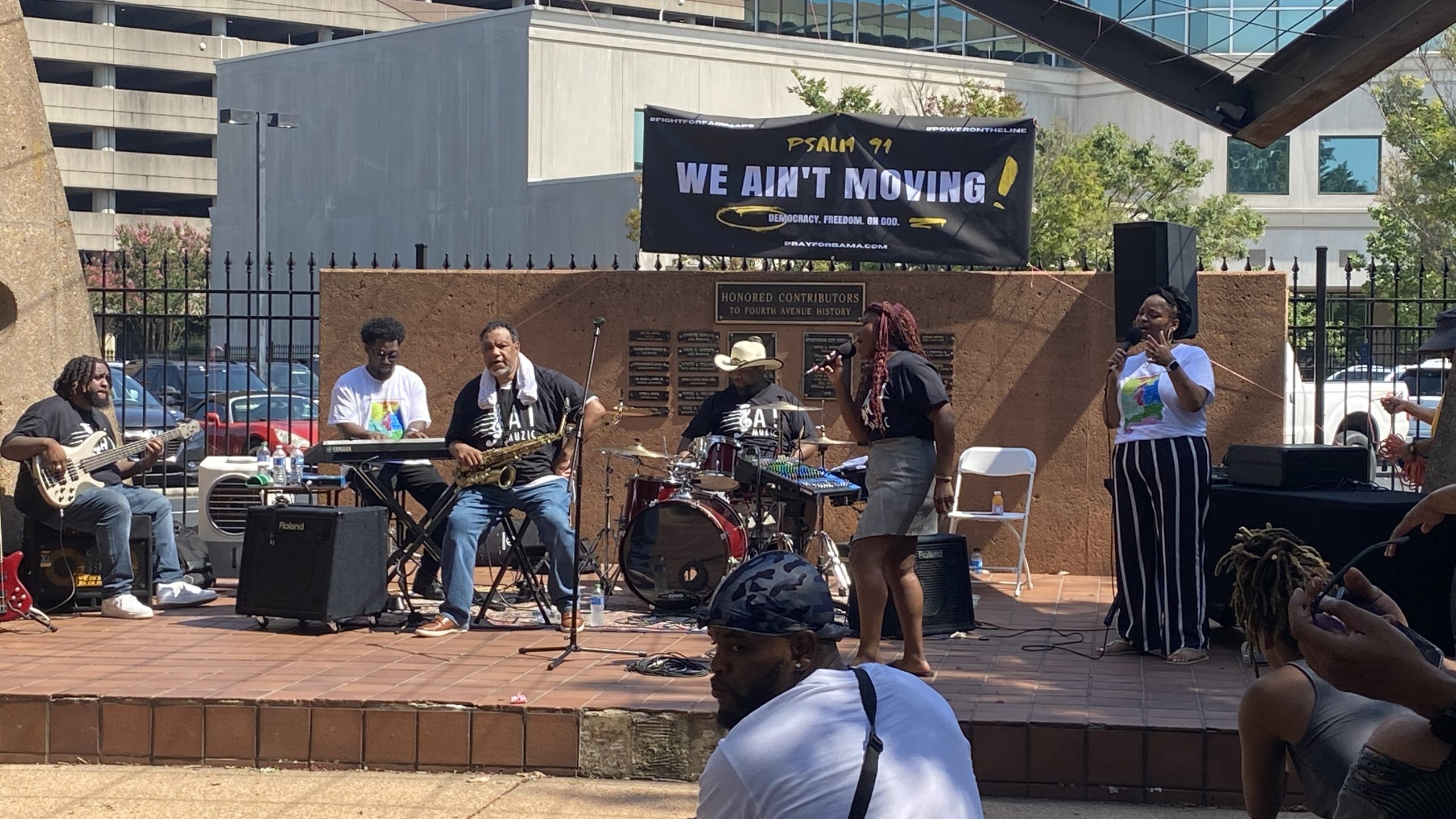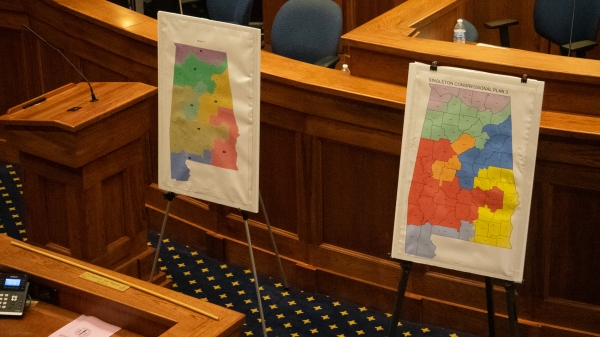The state of Alabama returned to court Monday over its congressional district maps to discuss the new map enacted by the Legislature as a potential remedy.
The three-judge federal panel appeared unimpressed with the state’s solution to the likely violation.
“What I hear you saying is the state of Alabama deliberately disregarded our instruction,” said U.S. District Judge Terry Moorer.
Sources told APR earlier this month that the design of the Senate Congressional plan had less to do with drafting an appropriate remedy to the apparent violation of Section 2 of the Voting Rights Act and more to do with bringing the challenge back before the U.S. Supreme Court and flip Justice Brett Kavanaugh in the state’s favor.
The court announced its position that it would not be relitigating the Section 2 violation, but that didn’t stop Alabama prosecutor Edmund LaCour from bringing back forward many of the state’s prior points, such as a continued argument that Mobile and Baldwin should be prioritized as a community of interest,
During opening arguments, Moorer asked LaCour whether the court’s finding that an appropriate remedy would be a second district that gives Black voters the opportunity to elect the candidate of their choice had any relevance to the day’s proceedings.
“I don’t think so your honor,” LaCour responded.
LaCour also several times referenced the VRA Remedial Map that was favored by House Democrats, despite the fact that the map has never been submitted to the courts.
“You’re shooting blanks in the night if you’re shooting at a map that’s not offered,” said U.S. Judge Stanley Marcus.
LaCour asked the court to imagine that the VRA Map was the only other alternative to the Livingston Congressional Plan, and said he referred to the VRA Map to highlight how that solution relied on “racial predominance” to create a second majority-minority district.
In fact, the state’s entire case hinges on whether the plaintiffs can meet the burden of proof that Black voters meet the first prong of the Gingles test, while conceding on prongs two and three. The three prongs of the Gingles test are that the minority group must be “sufficiently large and geographically compact” enough for a district, the at-question minority group must be “politically cohesive,” and the majority group must be “politically cohesive” in a way that defeats the minority group’s preferred voter.
LaCour argued that the VRA map and other illustrative maps split more counties than the Alabama Legislature’s plan, and said a court-appointed demographer ran 10,000 maps with one majority-minority district “locked in” and recognizing federal and state redistricting priorities, while prioritizing the Black Belt and the Gulf as communities of interest. That test brought results of a BVAP around 36 percent, which LaCour said shows that traditional redistricting principles without making race a predominant factor would yield similar results to the map enacted by the Legislature.
However, the U.S. Supreme Court has ruled previously and upheld in the previous Milligan v. Allen opinion that race can be sued as a factor to satisfy the Voting Rights Act.
“The way this purported remedy by the state of Alabama operates is the same as the way the 2021 performed for minorities,” said Abha Khanna, who represents the Caster plaintiffs. “This incomplete, this fake remedy is no remedy at all. It is a violation just as much as the 2021 plan.”
Deuel Ross, counsel for the Milligan plaintiffs, said after the hearing that he expects the courts to eventually draw the new maps.
“Our expectation is that the trial court will strike down the new map, and that if Alabama appeals to the Supreme Court, and the Supreme Court will have the same result that it had just a couple months ago,” Ross said.
“The state decided to focus on defiance over compliance,” Daniels said.
But the state continued its arguments in court that it has approached the redistricting with the Supreme Court decision in mind as well as the requirements of the Voting Rights Act.
“We are the only party here who is giving Allen vs. Milligan a serious reading,” LaCour said.
At the ALGOP Summer meeting last week, ALGOP counsel Victor Bowsher told members that the legal strategy is meant to give Republicans an opportunity to hold onto its 6-1 balance in Congress.
Creating a second majority-minority district, he said, would result in the balance of power shifting to five Republicans and two Democrats.
“This map gives us a fighting chance,” he said.
Sen. Steve Livingston, R-Scottsboro, also said after the passage of the map that he had been in conversation with U.S. House Majority Leader Kevin McCarthy, who told Livingston that Republicans would rather not lose their seat.



















































